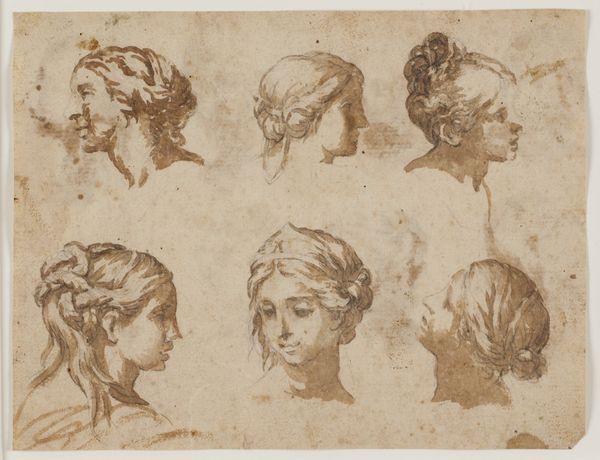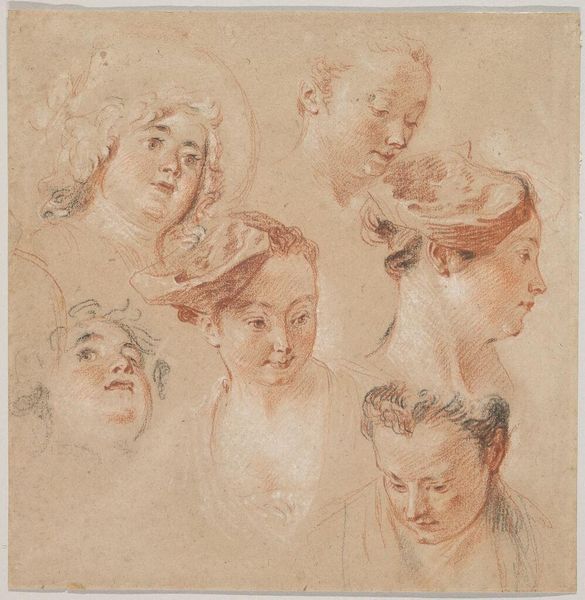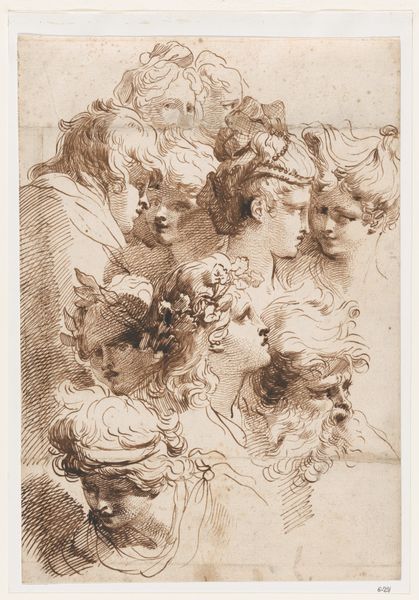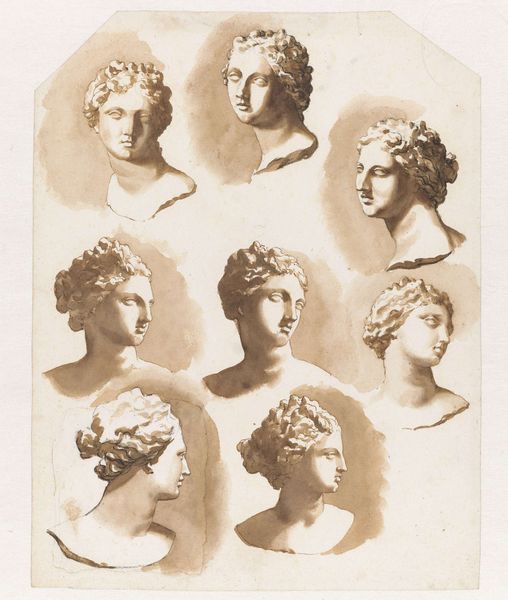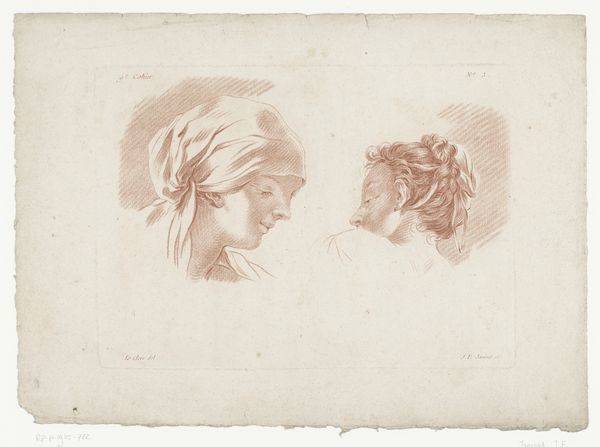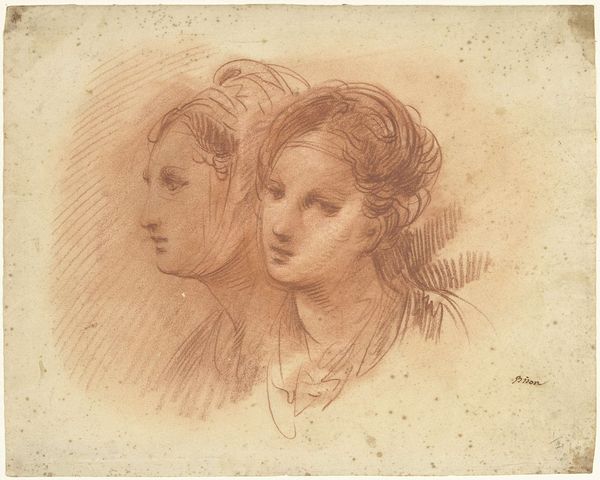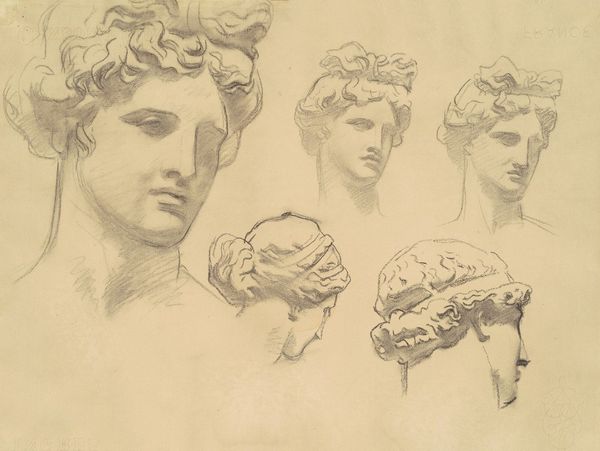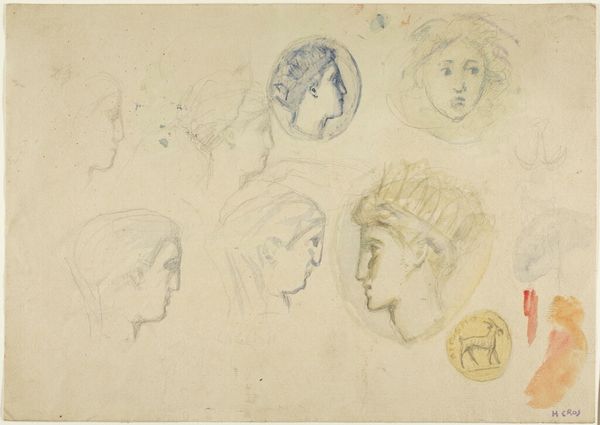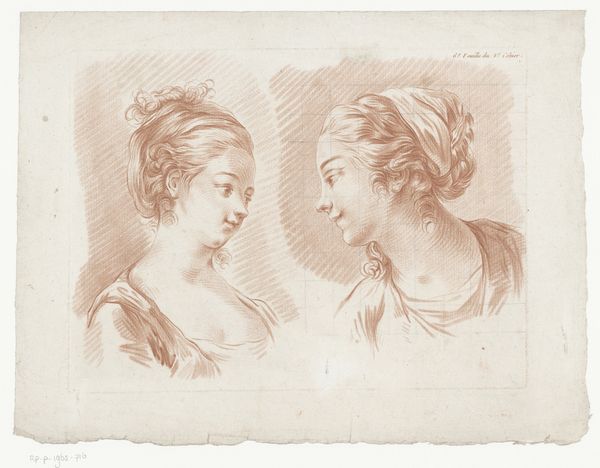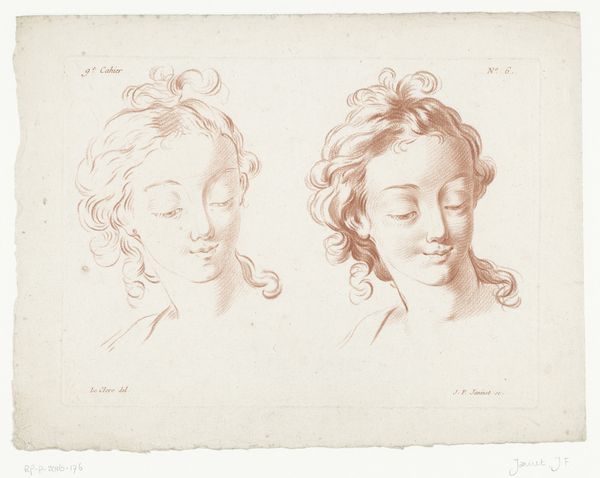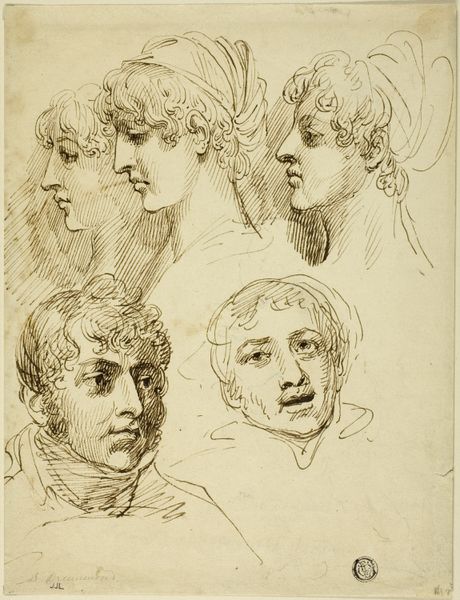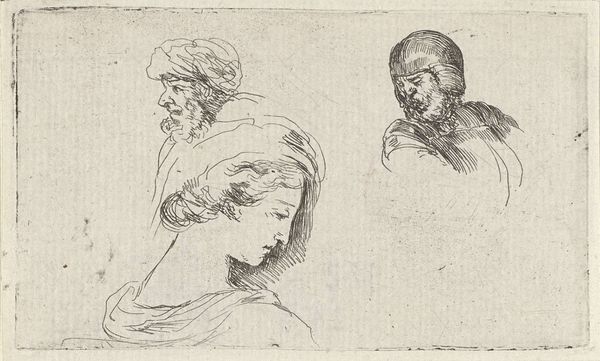
drawing, charcoal
#
portrait
#
drawing
#
charcoal drawing
#
charcoal
#
academic-art
Dimensions: 389 mm (width) x 240 mm (None) (bladmaal)
Curator: This sheet presents “Eight Studies of Female Heads,” likely dating from the period of 1622 to 1703. It is held here at the SMK, the Statens Museum for Kunst. Editor: My initial sense is one of restraint and careful observation. It’s a beautiful use of line and tone, despite the seeming economy of the drawing medium, most likely charcoal. There's a subtle vulnerability in those exposed necks, no jewelry or ornamentation of wealth on display. Curator: Exactly. What strikes me is the relationship to academic practices of the period. Study sheets like this were vital. It wasn’t merely about depicting female beauty; these drawings helped the artist develop a repertoire of poses and expressions. These were then utilized in larger history paintings or allegorical works. We have a fascinating record of the process. Editor: The immediacy you feel from the use of charcoal is really the most arresting feature here. These aren’t idealized goddesses yet, are they? I am really wondering about who these models were and where the artist worked on them. You have to wonder if these are indeed preliminary studies as you indicate, what was their final manifestation? What larger purpose were these made to serve in a master work, for example? Curator: We may never know definitively who the models were, although that they lack any individualizing features like jewelry may not actually say too much about their material wealth—rather the generalized look was part and parcel with the traditions around academic nudes during this time. Also interesting to note, even though labeled now under the authorship of “anonymous” this work was for centuries thought to be attributable to the circle of Cortona. Editor: That gives us such crucial additional information! Attributing this work to Cortona himself, or at the very least his close sphere of influence, does add significant heft. Looking again, one can begin to envision his grand Baroque style blooming from such careful observations. How social conditions shaped access to those particular resources. Charcoal wasn’t always prized, but for artists working to build their grand vision, as you indicated earlier, it offered a perfect mix of control and dynamism to plan and execute complex and very material-oriented historical and mythological statements. Curator: Indeed. It reminds us that even seemingly simple studies like these were part of a complex web of artistic practice and social expectation. Editor: Right—the labor, the model, the very consumable material—all key elements in understanding the artist's role and context. These heads offer a window into a larger picture.
Comments
No comments
Be the first to comment and join the conversation on the ultimate creative platform.
